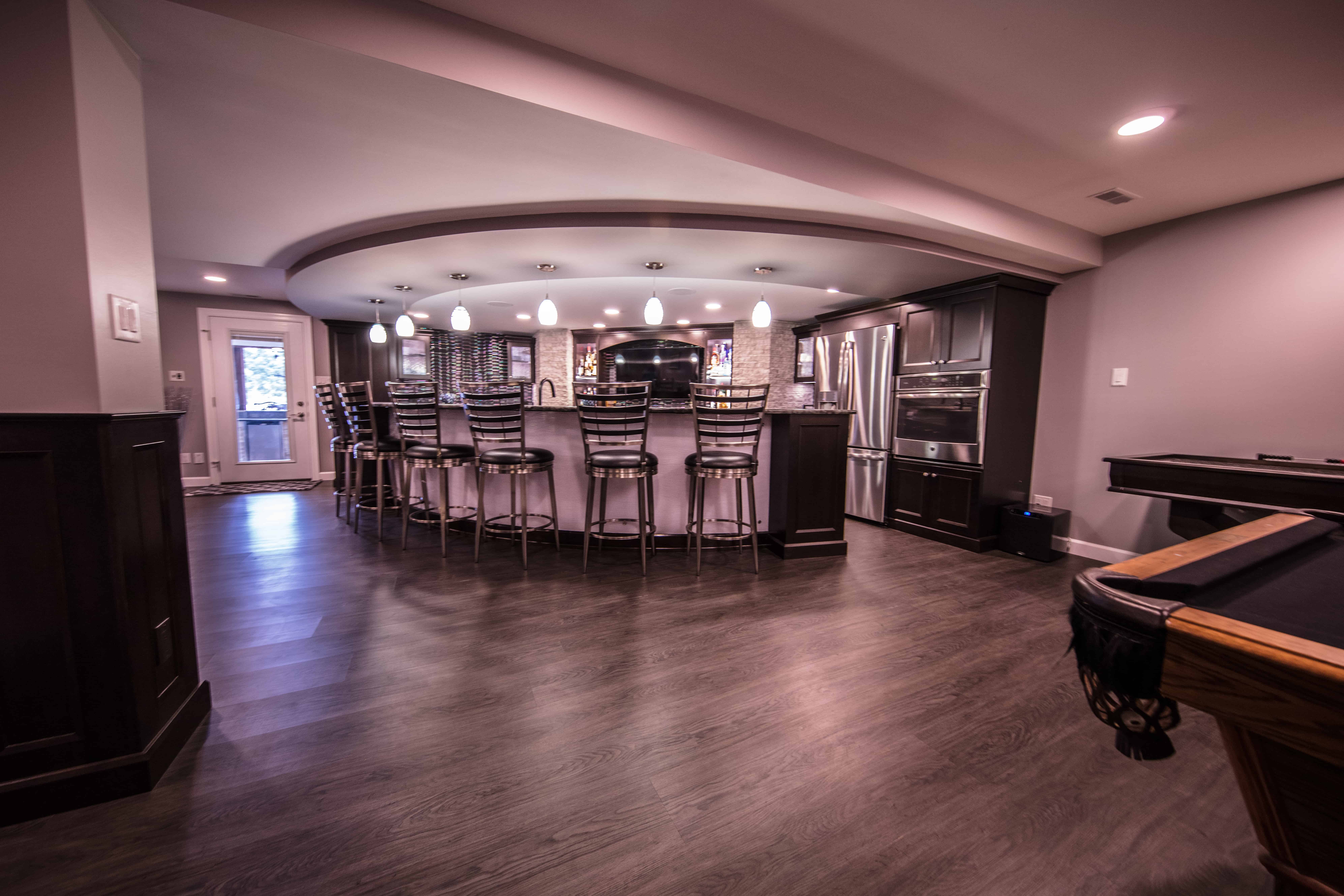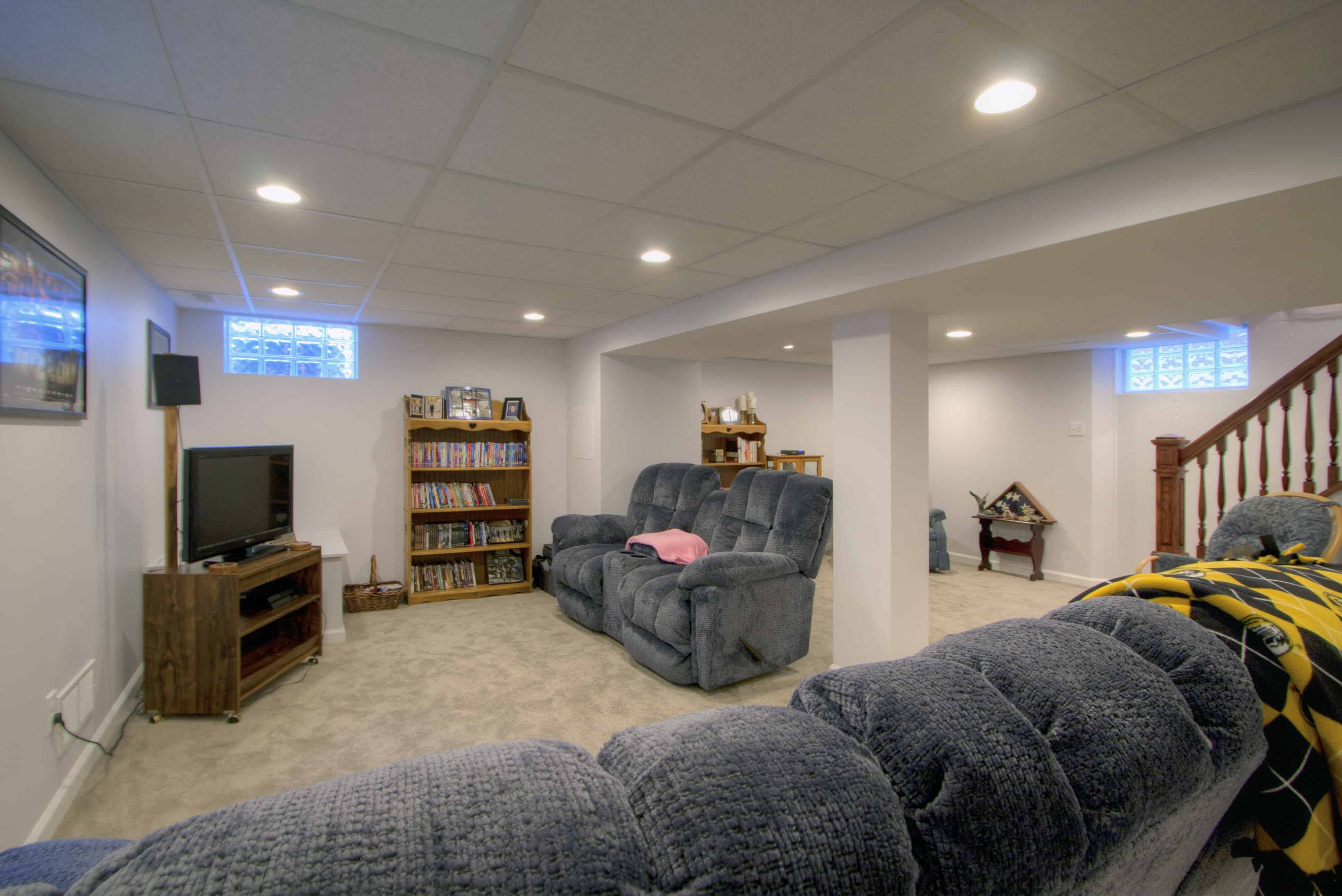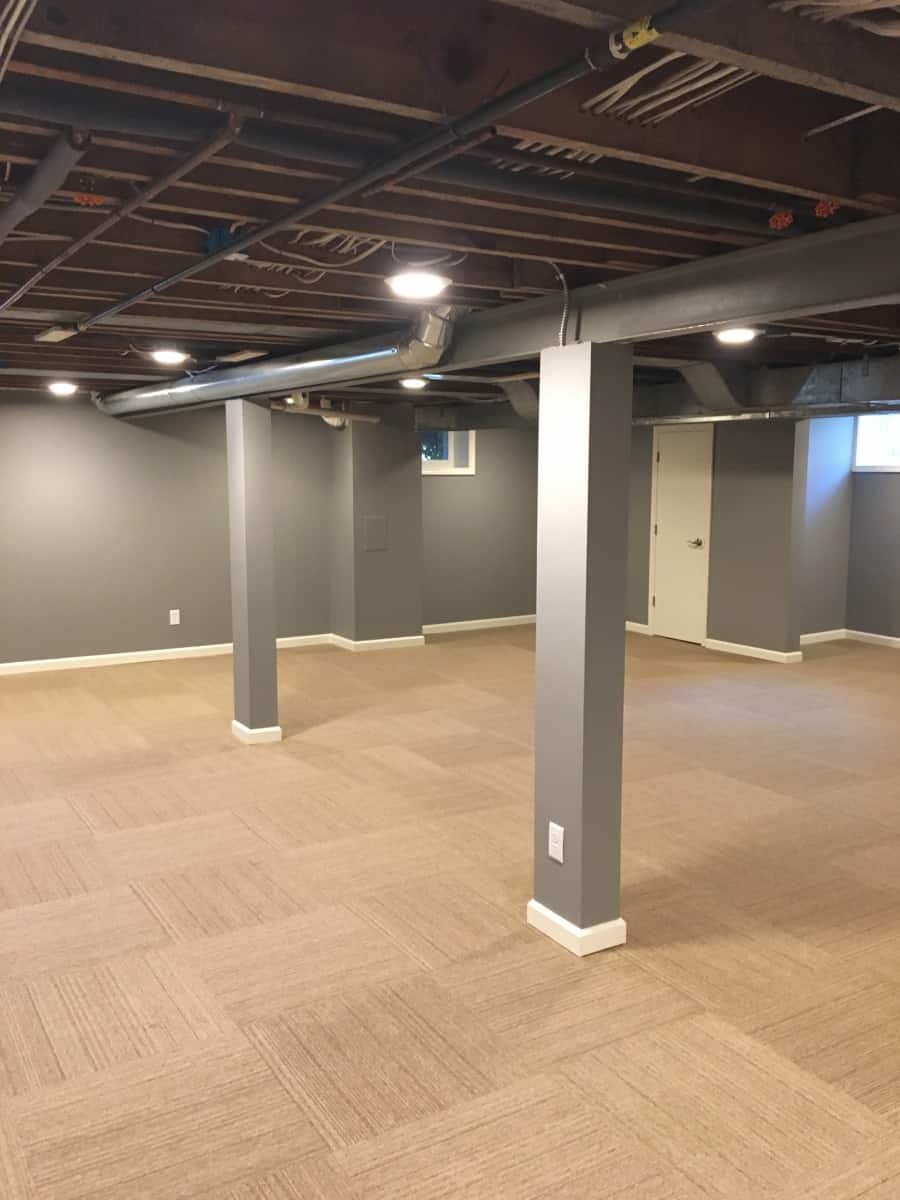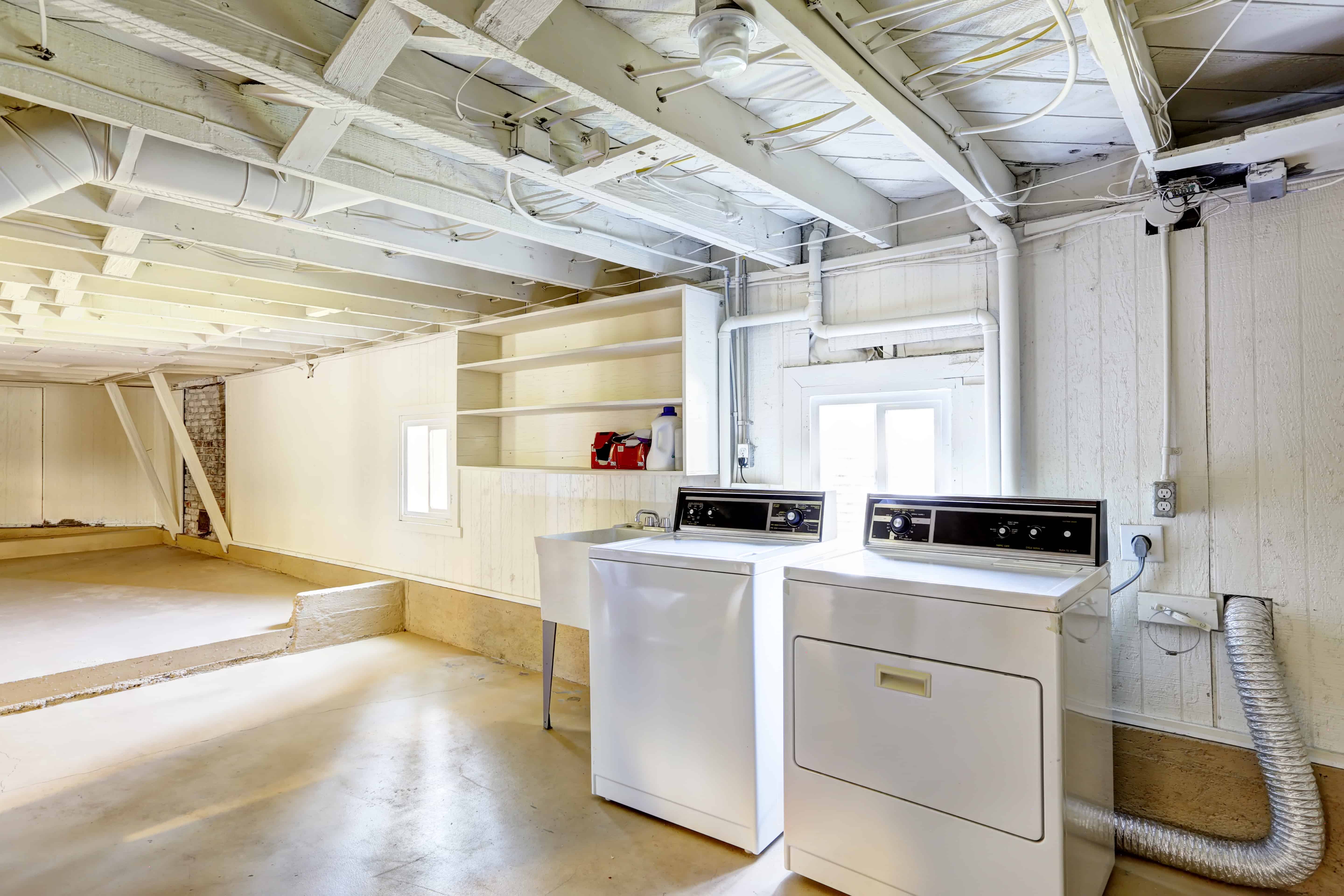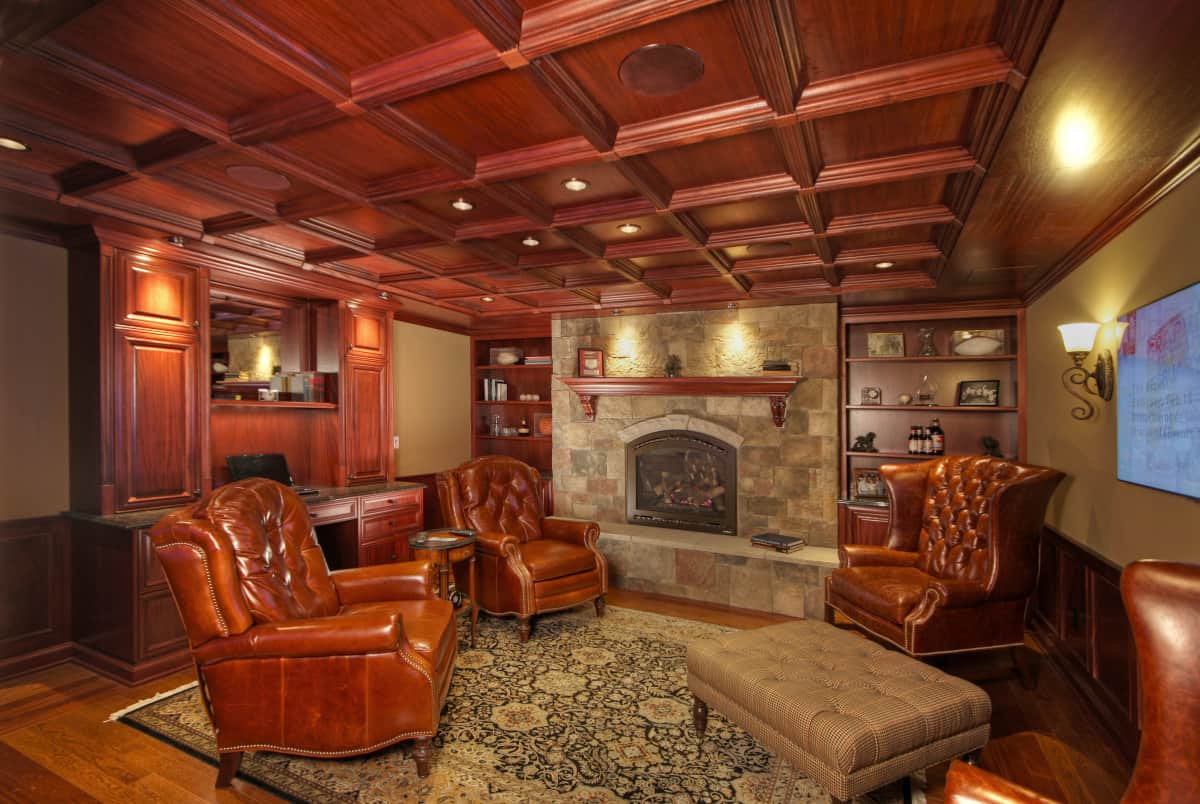The options are endless for homeowners when remodeling a lower level. Most often homeowners are creating brand new spaces from a blank slate. A lot of thought goes into space planning, and specific material and design options. One important decision to be made is what to do with the ceiling. Ceiling material and design options have expanded over the years as finished lower levels have become more popular. Let’s look at some of the most popular:
Drywall Ceiling
Often times when remodeling a basement, drywall is used to finish the walls. A sensible solution is to continue the drywall on the ceiling. Drywall provides one of the most finished and complete looks. It also helps give the impression that you aren’t in a basement, which helps with the natural flow of the house. One potential drawback of drywall ceilings is that it inhibits access to the electrical and plumbing, but homeowners will more than likely not need to access these areas very often. A smart addition would be to install paintable access panels for key entry points to HVAC dampers, junction boxes, water shutoff’s, etc.
Acoustic/Drop Ceiling
Drop ceilings can be more cost-effective than drywall and the panels come in a variety of sizes and styles. Mosby Designer Jake Spurgeon recommends the 24’ x 24’ style opposed to the older 24’ x 48’ style because the larger panels tend to sag and look tired after a few years. A benefit of the drop ceiling is that mechanical systems such as plumbing and electrical are easily accessible. Drop ceiling panels also act as a nice acoustical barrier to the upper levels of the house because the soft panels absorb the sound, and there is a space between the panels and the floor above that creates an area for sound to dissipate. Another benefit of panel ceilings is that when a panel is damaged it can easily be replaced. The main con to panels is that while drywall ceilings give the impression that you’re not in a basement, drop ceilings feel more like you’re in a basement or a commercial space.
No Ceiling
Who says you must have a ceiling? Leaving the ceiling unfinished provides an industrial look and is obviously more cost effective than installing a ceiling. However, the sound from the lower level can reverberate against the subfloor above, so if you have kids it could be a noisy option.
Painted Floor Joists and Subfloor
This is another option for an exposed ceiling. Painting the joists and subfloor is possible to do, but painting gas, water, and electrical lines are not recommended. They should all be taped off prior to painting. These lines have information printed on them to notify workers and homeowners to what they are. For example, many homes have copper gas lines running alongside black cast iron water pipes. If the copper gas line is painted black, a plumber could mistake it for a water line, and cutting into that line could be extremely hazardous. So, while painting the joist and subfloor is an option, it should be executed with these important details in mind.
Custom/Specialty Ceilings
You can take your basement remodel to the next level with a custom ceiling like this coffered ceiling made from mahogany. If you have the height, other ceiling ideas include tray ceilings, reclaimed wood beams, and decorative metal ceiling tiles. All of these ideas allow homeowners to create an upscale look with a wow factor. While there are endless custom ceiling options, most will be not nearly as cost effective as a drywall or drop ceiling.
Mosby Building Arts has been enhancing St. Louis, MO basements for more than 70 years. We can help you tackle your lower level remodel from conception to completion.




